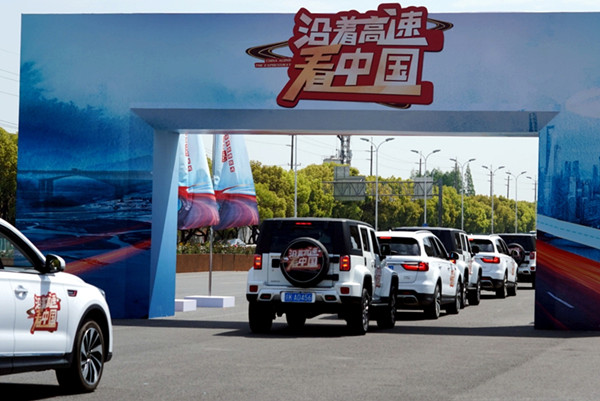 |
|
The Hujia Expressway in Shanghai was the first national highway project in the Chinese mainland. GAO ERQIANG/CHINA DAILY |
Since the Hujia Expressway opened to traffic in October 1988, road travel in and around Shanghai has been transformed, one of the biggest changes being the time saved to travelers.
The expressway, from Shanghai to its satellite town of Jiading, was the first national highway project in the Chinese mainland, and its 15.9 kilometers reflects the country's relentless efforts to improve its transport.
The country is now home to the world's longest expressway network, spanning 160,000 km, said Wang Songbo, deputy director of the comprehensive planning department of the Ministry of Transport.
However, Zhang Kuihong, 79, deputy chief engineer of the Hujia Expressway, said there was resistance before work began on the expressway.
"Building it was essential in the 1980s. The domestic economy was starting to boom after reform and opening-up began in 1978, and products such as chicken, fish and shrimp needed to be transported from the suburbs to Shanghai's downtown area by road.
"Some people felt the cost was just too high, and others argued that it would be pointless to build an expressway because the country's automotive industry was then underdeveloped."
Following extensive research, the government backed the Hujia Expressway pilot project, and construction began in 1984.
Invaluable experience was gained through the project. The construction team found the use of crushed basalt, a dark-colored, igneous rock, in road base construction could increase friction between the road and vehicles, improving safety.
The team, for the first time, recycled fly ash, a kind of coal-fired power plant waste, and replaced soil with it to fill the road base, which turned to be an environmentally friendly approach. The innovation was awarded first prize in the Shanghai Municipal Science and Technology Progress Awards in 1989.
The project also produced the first traffic, road conditions and emergency monitoring room for expressways in the Chinese mainland.
"The expressway accelerated the development of Shanghai's economy, including tourism," Zhang said. "More factories and companies were attracted to the city, investing money in the area and setting up branches here."
The highway also helped facilitate the establishment of an industrial park in Taopu town and an ancient town for tourism, Nanxiang, as well as the development of Jiading, he said.
Expressways connecting Shanghai with more regions were built, and the total length of highways in the city reached 12,916.6 km last year, compared with 1,978 km in 1978.
Expressway traffic is of course much heavier than it once was, an average of 4,000 vehicles a day in 1988 compared with about 1.5 million a day on the city-wide road network last year.
It takes vehicles no more than 15 minutes to enter the road network from any local industrial area, transport hub and passenger and cargo distribution center in Shanghai.
In March local government pledged to introduce new policies this year to build five of its suburban districts, including Jiading, into independent and comprehensive node cities that drive the growth of Shanghai and the Yangtze River Delta by 2035.
Tang Zhiping, vice-mayor of Shanghai, said policies will cover talent acquisition, land planning, tax and fiscal incentives, and the business environment to support the development of new cities.
Three transport circles will also be built to facilitate travel within the cities and to surrounding towns and cities of neighboring provinces.
"I feel so proud to have been able to witness the highway's achievements," Zhang said.

